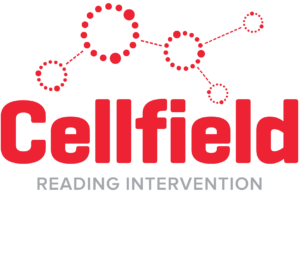FAQ.
Who is suitable for Cellfield?
Cellfield is suitable for both children, (from seven years of age) and adults with reading difficulties.
Selection criteria includes:
- reading age falls behind actual age
- symptoms of dyslexia
- language disorders
- difficulty carrying out oral instructions
- poor reading, spelling and writing skills
- poor fluency, accuracy and/or comprehension
- cannot recall what they have read
- feel discomfort or suffer from fatigue when reading
- have poor working memory
- feel discomfort looking at black letters on white paper
- eye movement control problems
What are the symptoms of reading difficulties or dyslexia?
Reading difficulties can present in many different ways with many different symptoms. Some of these are listed below.
Pre-school Age:
- Late talking
- Slow to learn new words
- Difficulty learning nursery rhymes
- Difficulty playing rhyming games
School Age:
- Reading well below expected level, for age
- Problems processing and understanding what is heard
- Difficulty understanding rapid instructions
- Problems remembering the sequence of things
- Difficulty seeing (and sometimes hearing) similarities and differences in letters and words
- Inability to sound out the pronunciation of an unfamiliar word
- Trouble spelling
- Trouble learning a foreign language
Teenager and Adults:
- Trouble reading, including reading aloud
- Difficulty understanding jokes and expressions
- Difficulty with time management
- Difficulty summarising a story
- Trouble learning a foreign language
- Difficulty memorising
- Trouble doing math problems
Adapted from Mayo Clinic page on dyslexia.
What makes Cellfield different?
Research in brain plasticity suggests that our brain pathways can be changed. Cellfield is the first intervention to specifically re-route these pathways by targeting auditory, visual, and auditory-to-visual pathways within the brain.
What is brain plasticity?
Brain plasticity (also called neuroplasticity) is a common term used by neuroscientists. It refers to the brain’s ability to change at any age.
For more information read Brain plasticity: How Learning Changes Your Brain by Dr. Pascale Michelon
How long does a Cellfield phase take?
Approximately twelve weeks. A client will first complete a pre-assessment (1.5 hours) and an optometric test at a registered Cellfield optometrist.
Phase One is a two week intervention which comprises of ten sessions that are no more than one hour each. Re-testing is completed after Phase One.
Phase Two may be completed at the centre and comprises ten sessions delivered over a ten week period.
A final post-test is carried out six months later and a final report issued.
How do you measure results?
We use industry standardised assessment tests BEFORE and AFTER the intervention, such as Woodcock Reading Mastery Tests, to measure the client’s progress.
How do we know that Cellfield works?
There are several research studies that suggest Cellfield will reduce reading difficulties including dyslexia:
- A peer-reviewed study, published in the Australian Journal of Learning Disabilities 2005, showed that Cellfield achieved key skill learning rates up to 40 times faster than a normal child. This is unprecedented.
- In 2009 Professor Coltheart from the Macquarie Centre for Cognitive Science, supported the position that Cellfield outcome gains, were not augmented by test/retest effects, (given the two-week time interval between the before and after assessments), or by regressions towards the mean, (a statistical tendency for very low scores to improve the second time without any intervention). Coltheart’s closing comments: “There is clear statistical evidence that the Cellfield treatment improved these children’s ability to read”.
- In 2009, a study of Cellfield’s efficacy was performed at the University of Tasmania. Twelve children, all screened as being dyslexic (according to the Dyslexia Screening Test (DST) by Fawcett and Nicholson) participated. The research team recorded neural activity during reading, using Event Related Potentials (ERP) methods. Before Cellfield, none of the children showed the left hemisphere activity typical of reading. Seven children performed the Cellfield dyslexia treatment and five in the placebo group played a computer game. Both groups then had three weeks of regular schooling. The Cellfield group showed a 33% drop in their DST dyslexic risk index compared to the placebo group which dropped by only 10%. ERP results indicated neural changes only within the Cellfield group, which shifted activity from the right hemisphere to the left hemisphere “suggesting, at least neurally, a partial return to language processing which more closely resembles that of normal readers”.
What are the gains?
Cellfield achieves consistent gains in the several key test areas. The best result is Word Attack which often shows age improvement of two years. Word Attack is the ability to read aloud nonsense words (e.g. plurp, fronkett etc.) to test phonetic “word attack” skills. Passage Comprehension and Word Comprehension skills also improve on average 17 to 18 months.
Here are some statistics:
| Clients | Tested for | Average Gain * |
| 1133 | Word Attack | + 26.19 months |
| 1114 | Passage Comprehension | + 18.55 months |
| 108 | Word Comprehension | + 17.68 months |
* Gains calculated 26/07/2016 on test result data recorded by authorised Cellfield Licensees.
Are there other improvements?
Our clients’ feedback:
- better focus in school and with homework
- greater motivation
- better organisation during task completion
- improved confidence
- improved self-esteem.
Sub-groups of children with Specific Language Impairments have also achieved improved literacy skills.
Who is not suitable for Cellfield?
The Cellfield treatment requires a client to concentrate and apply ‘sufficient’ cognitive effort during the treatment sessions. It is not unusual to have clients who struggle with these aspects. Skilful and persistent attention by Cellfield practitioners, help achieve success.
However, there are extreme cases where clients cannot apply that cognitive effort or attention, either through injury, impaired vision, hearing or motor functions, or severe psychological problems. These clients are less likely to derive benefit from the Cellfield dyslexia program.
Clients also need to have some basic knowledge and skills, such as have reasonable letter/sound correspondence skills in place. If this is not the case, then clients should undertake some tuition before taking part in Cellfield.
Those with epileptic tendencies require written medical clearance before undergoing the Cellfield treatment.
What are the next steps?
Contact us for an assessment or refer to our locations page to find your nearest Cellfield provider.
Is it possible to repeat Cellfield?
Yes. If the pre-assessment has indicated very severe reading disabilities or if the client has not reached their age level in all their reading skills after completion of the program. Your provider may recommend that Cellfield be repeated at a higher level, 6 to 12 months later.
How do I become a Cellfield Provider?
We are currently seeking qualified individuals and centres to become Cellfield providers.
Ideal providers are speech language therapists, occupational therapists, optometrists, educators including special education teachers, psychologists, audiologists, learning/tutoring centres and quality educational institutions.
Contact headoffice@cellfield.co.nz if you would like to learn more.

